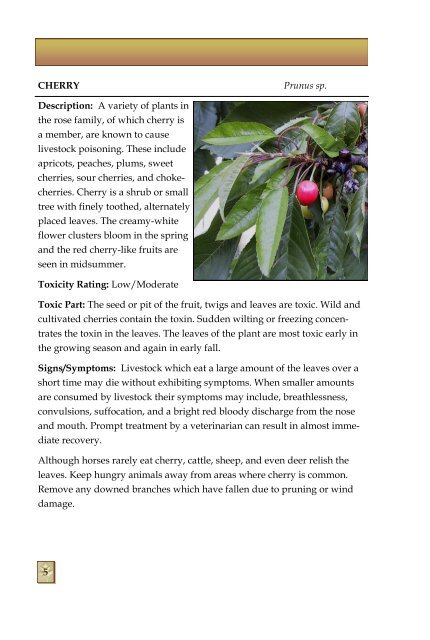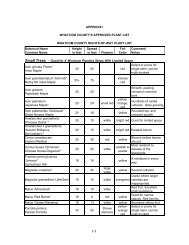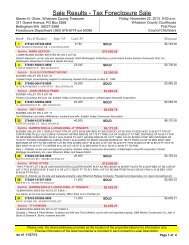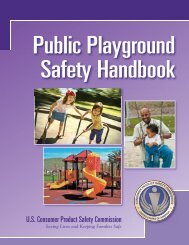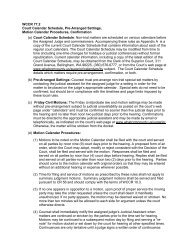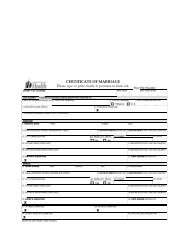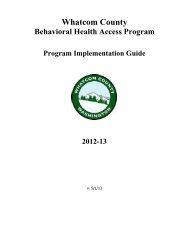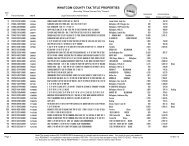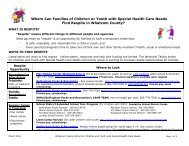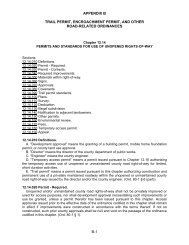Poisonous Plants Booklet - Whatcom County
Poisonous Plants Booklet - Whatcom County
Poisonous Plants Booklet - Whatcom County
Create successful ePaper yourself
Turn your PDF publications into a flip-book with our unique Google optimized e-Paper software.
CHERRY<br />
Prunus sp.<br />
Description: A variety of plants in<br />
the rose family, of which cherry is<br />
a member, are known to cause<br />
livestock poisoning. These include<br />
apricots, peaches, plums, sweet<br />
cherries, sour cherries, and chokecherries.<br />
Cherry is a shrub or small<br />
tree with finely toothed, alternately<br />
placed leaves. The creamy-white<br />
flower clusters bloom in the spring<br />
and the red cherry-like fruits are<br />
seen in midsummer.<br />
Toxicity Rating: Low/Moderate<br />
Toxic Part: The seed or pit of the fruit, twigs and leaves are toxic. Wild and<br />
cultivated cherries contain the toxin. Sudden wilting or freezing concentrates<br />
the toxin in the leaves. The leaves of the plant are most toxic early in<br />
the growing season and again in early fall.<br />
Signs/Symptoms: Livestock which eat a large amount of the leaves over a<br />
short time may die without exhibiting symptoms. When smaller amounts<br />
are consumed by livestock their symptoms may include, breathlessness,<br />
convulsions, suffocation, and a bright red bloody discharge from the nose<br />
and mouth. Prompt treatment by a veterinarian can result in almost immediate<br />
recovery.<br />
Although horses rarely eat cherry, cattle, sheep, and even deer relish the<br />
leaves. Keep hungry animals away from areas where cherry is common.<br />
Remove any downed branches which have fallen due to pruning or wind<br />
damage.<br />
5


